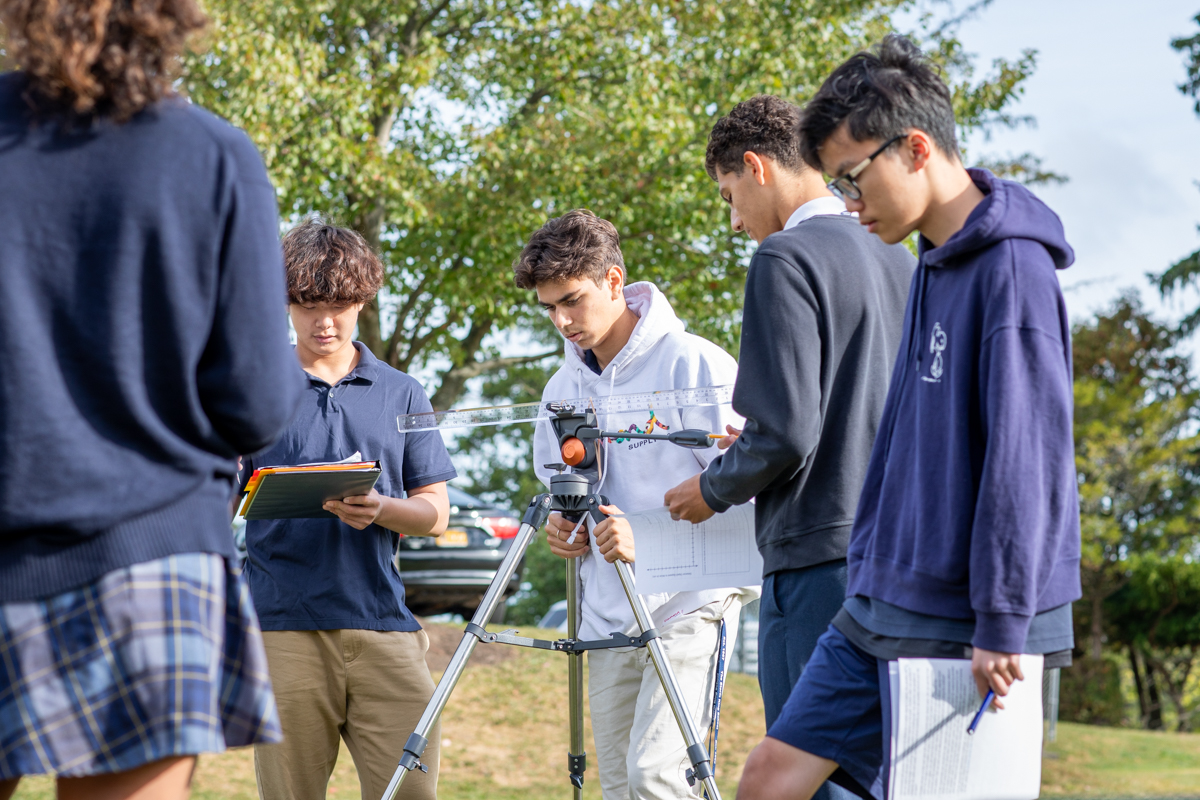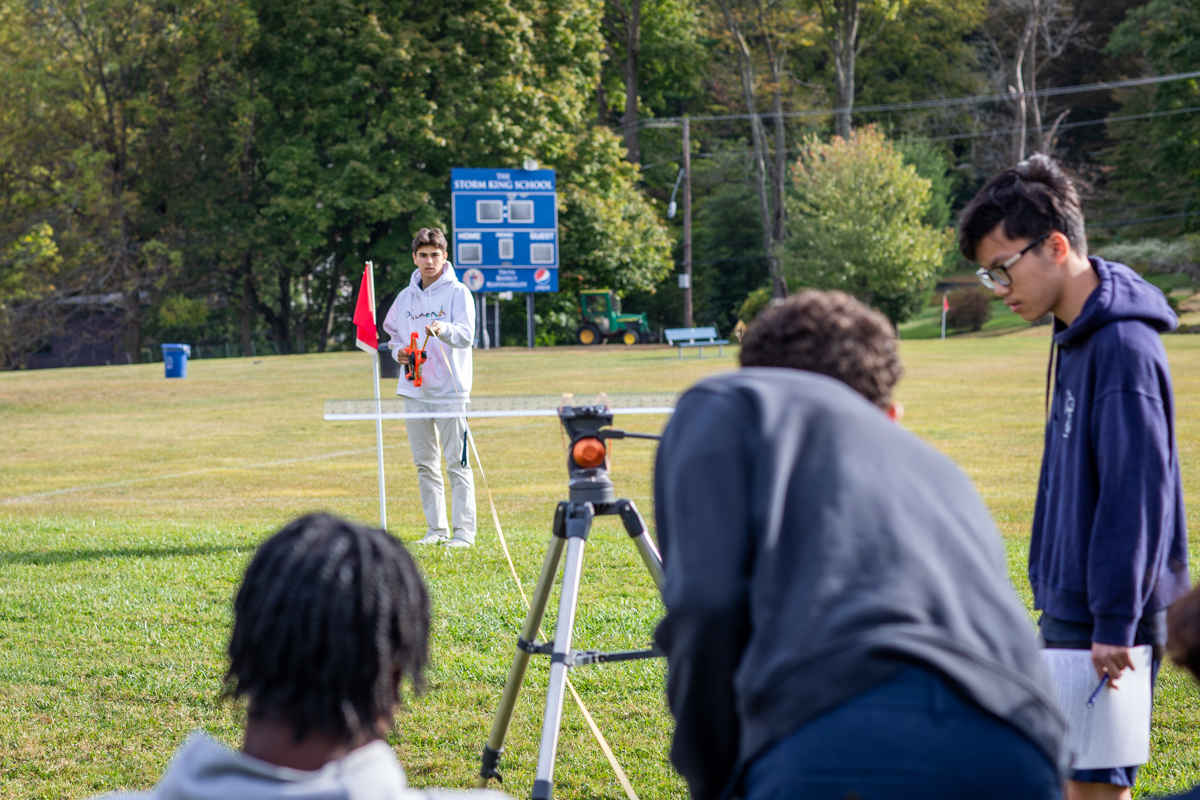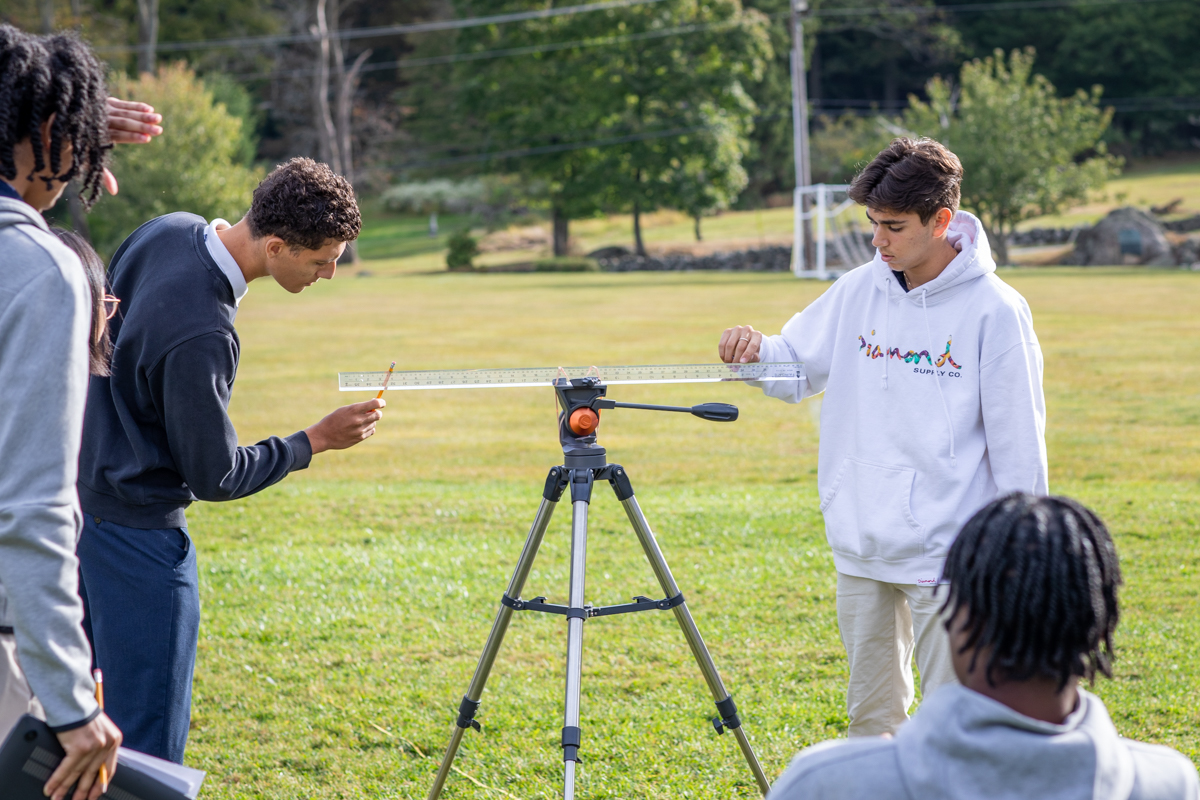Recently, Mr. DeLuzio’s Astronomy class took learning beyond the classroom, capitalizing on the beautiful fall weather to explore the fascinating concept of parallax motion. This hands-on activity not only energized the students but also deepened their understanding of how astronomers measure the distances to celestial objects.

Parallax, the apparent motion of a distant object against a background when observed from different angles, is crucial for depth perception—an ability we often take for granted in our daily lives. According to Mr. DeLuzio, “in astronomy, measuring distances to stars presents a unique challenge; after all, we can’t simply walk to these celestial bodies with a tape measure. Instead, astronomers rely on parallax measurements by observing a star from different points in Earth’s orbit around the sun, such as comparing views from winter and summer.”
In this engaging outdoor activity, students were set up in pairs, seated on side-by-side chairs to represent different observational perspectives. A meter stick, acting as the distant object, was placed at various distances in front of the chairs. By measuring how much the background appeared to shift when viewed from each chair, students were able to calculate the relationship between their measurements and the distance to the meter stick.
This hands-on approach not only made the lesson enjoyable but also allowed students to appreciate the clever techniques astronomers use to study objects that are too far away for direct interaction. By applying these concepts to a tangible activity, Mr. DeLuzio’s class gained valuable insights into the principles of astronomy, making the study of the stars a little closer to home!





